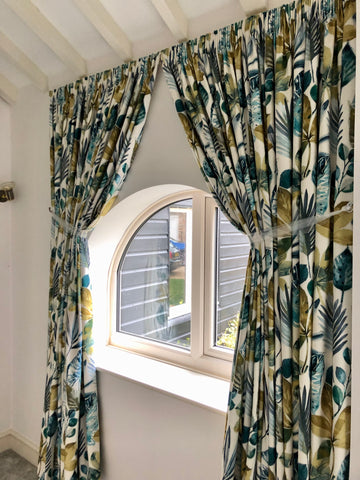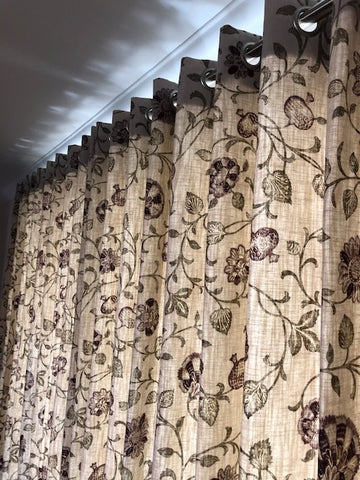Our Guide to Curtain Headings
There are a variety of curtain headings available when choosing new curtains. Here are our tips for choosing the perfect curtain heading for your fabric and style.
Pencil Pleat
This classic curtain heading is the most cost effective to make up. Heading tape is attached to the top of the curtain and needs to be gathered to your required width. This creates a neat row of pleats resembling a row of pencils. Pencil pleat curtains can be hung from a track or pole, we recommend using lots of hooks to allow the curtain to hang nicely. Pencil pleats are at home in a contemporary house as well as period style homes.

Double or Triple Pinch Pleat
Double or Triple pinch pleated curtains are pleated to fit your pole exactly. The pleats form uniform folds within the curtain for a tailored look. As the names suggest, a double pleat has two pleats, and a triple pleat has three pleats. Triple pleats require more fullness, we allow 2.5 times fullness. For double pleats we allow 2 times fullness. They can be hung from a track or pole and look best when hung beneath the pole.

Eyelet
Eyelet curtains have a modern, contemporary look. The curtains have metal rings (eyelets) inserted into the top of the curtain and are then threaded onto a curtain pole. Eyelets are available in a variety of colours including silver, chrome, and antique brass. We recommend hanging eyelet curtains on a metal pole as this will help them to move easily. Eyelet curtains aren't suitable for bay windows.

Wave
Wave curtains are hung on a specialist track or pole and create a simple, contemporary look. A wave track has wave gliders within it which allow the curtains to sit in permanent folds to create a "wave" effect. They stack back neatly taking up minimal space. They look best on large windows such as bi folding doors. We can order wave tracks at extra long lengths up to 10 metres. Wave curtains can be lined and also look great in sheer voile fabrics.

